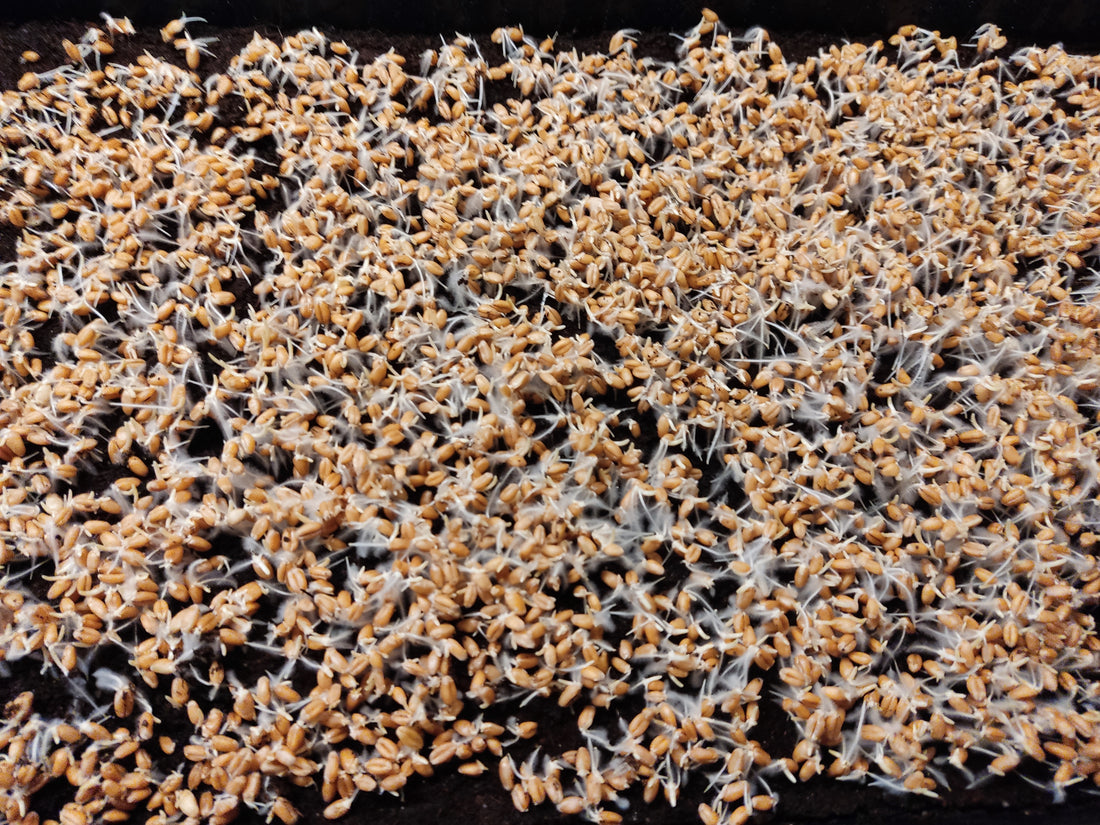
Distinguishing Mold from Root Hairs: Understanding the Difference
Share
In our latest video, we distinguishing between root hairs and mold when sprouting or germinating your microgreens seeds. This can confuse many growers when they are starting out as both root hairs and mold may appear as thin, thread-like structures in soil or on plant surfaces, but understanding the disparities between them is crucial for effective plant care and maintenance. In this blog, we delve into the characteristics of mold and root hairs, enabling you to differentiate between the two with confidence.
Understanding Mold
Mold belongs to the fungal kingdom and thrives in moist environments. It often manifests as fuzzy or powdery growth on surfaces, ranging from white and gray to green or black in color. Mold colonies can develop rapidly, especially in warm and humid conditions. Common types of mold include powdery mildew, botrytis, and black mold.
Key Characteristics of Mold
- Fuzzy or powdery appearance.
- Rapid growth, especially in moist environments.
- Various colors, including white, gray, green, or black.
- Often associated with a musty odor.
- Can cause health issues if inhaled or ingested.
Distinguishing Root Hairs
Root hairs, on the other hand, are natural structures that form part of a plant's root system. These microscopic outgrowths emerge from the roots' surface and play a vital role in nutrient absorption and anchorage. Root hairs are typically transparent or light-colored, appearing as fine threads extending from the root surface.
Key Characteristics of Root Hairs
- Thin and elongated structures.
- Light-colored or transparent.
- Attached to the surface of plant roots.
- Function primarily in nutrient absorption and anchorage.
- Typically uniform in appearance, without the fuzzy or powdery texture seen in mold.
Differentiating Between Mold and Root Hairs
- Texture: Mold often appears fuzzy or powdery, while root hairs are smooth and hair-like in texture.
- Location: Mold tends to grow on surfaces such as soil, plant leaves, or decaying organic matter, whereas root hairs are exclusively found on plant roots.
- Color: Mold can exhibit various colors, whereas root hairs are usually light-colored or transparent.
- Growth Pattern: Mold colonies spread rapidly, forming visible patches, whereas root hairs grow in a uniform manner along the surface of plant roots.
- Function: Mold is a decomposer and may indicate poor environmental conditions or decaying organic matter, while root hairs serve essential functions in nutrient uptake and plant health.
Conclusion
In the intricate ecosystem of plants and soil, distinguishing between mold and root hairs is essential for maintaining optimal plant health. By recognizing the key characteristics of each, gardeners and farmers can take appropriate measures to address any issues and foster a thriving environment for their plants. Whether it's promoting proper drainage to deter mold growth or ensuring adequate nutrient availability for healthy root development, understanding these distinctions empowers individuals to nurture flourishing plant life effectively.
